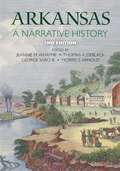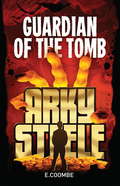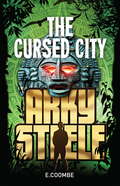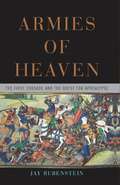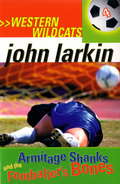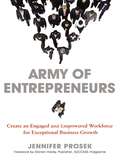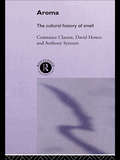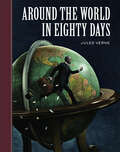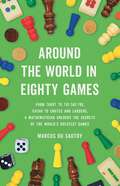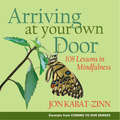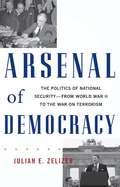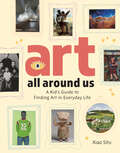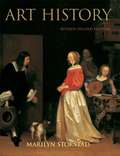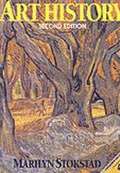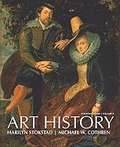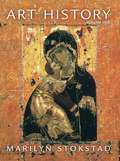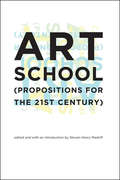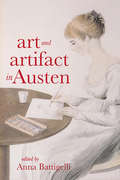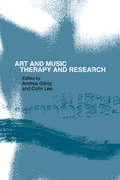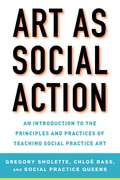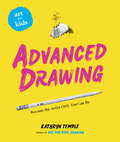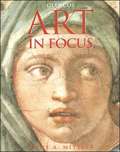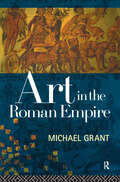- Table View
- List View
Arkansas: A Narrative History, Second Edition
by Jeannie M. Whayne Thomas A. Deblack George Sabo III Morris S. ArnoldArkansas: A Narrative History is a comprehensive history of the state. It covers prehistoric Arkansas, the colonial period, and the nineteenth and twentieth centuries and incorporate the newest historiography to bring the book up to date. This second edition begins with a new chapter focusing on Arkansas geography and includes a number of maps highlighting various features of Arkansas's natural landscape.
Arky Steele: Guardian of the Tomb
by E. CoombeA gripping, action-packed new adventure series.Arky Steele is a not your average 12-year-old: his mother is an adventurer and his father is an archaeologist. With them, he travels the world hunting for ancient treasures and trying to stay one step ahead of their nemesis, evil billionaire Goran Rulec.In Guardian of the Tomb, Arky accompanies his dad on a mission to Mongolia to find the lost treasure of one of the world?s most infamous despots, Genghis Khan. But they are not alone: a band of criminals is determined to thwart Arky at every turn.E. Coombe?s fast-paced writing in the Arky Steele Adventures is full of twists and turns, blending danger, suspense and humour. Arky's story continues in THE CURSED CITY, also now available.
Arky Steele: The Cursed City
by E. CoombeA gripping, action-packed new adventure series.Arky Steele is a not your average 12-year-old: his mother is an adventurer and his father is an archaeologist. With them, he travels the world hunting for ancient treasures and trying to stay one step ahead of their nemesis, evil billionaire Goran Rulec.In The Cursed City, Arky and his friend Bear join an expedition to find a mythical lost city that holds a priceless treasure. But not everyone on the expedition is on their side... This second Arky Steele Adventure from E. Coombe follows on from GUARDIAN OF THE TOMB, and finds Arky, once again, up to his neck in trouble!
Armies of Heaven: The First Crusade and the Quest for Apocalypse
by Jay RubensteinAt Moson, the river Danube ran red with blood. At Antioch, the Crusaders- their saddles freshly decorated with sawed-off heads-indiscriminately clogged the streets with the bodies of eastern Christians and Turks. At Ma'arra, they cooked children on spits and ate them. By the time the Crusaders reached Jerusalem, their quest-and their violence- had become distinctly otherworldly: blood literally ran shin-deep through the streets as the Crusaders overran the sacred city. Beginning in 1095 and culminating four bloody years later, the First Crusade represented a new kind of warfare: holy, unrestrained, and apocalyptic. In Armies of Heaven, medieval historian Jay Rubenstein tells the story of this cataclysmic event through the eyes of those who witnessed it, emphasizing the fundamental role that apocalyptic thought played in motivating the Crusaders. A thrilling work of military and religious history, Armies of Heaven will revolutionize our understanding of the Crusades.
Armitage Shanks and the Footballer's Bones: Western Wildcats 4
by John LarkinThe Wildcats are in trouble again! Down on the ground, there?s got to be some way of raising funds, and their coach comes up with health food bars. Only trouble is they?re inedible, and whoever sells the most gets an all-expenses-paid trip to Canberra. Up in the air, though, Splinters and Nuke are on their way to London to retrieve their best player, Gazza, who?s been deported back to England with her mum, and the two boys get up to the sort of in-flight antics that have made travelling footballers notorious. Grappling as always with the problem of how to make up the numbers, someone remembers a genius footballer called Armitage Shanks who registered for the Under 6s, but never turned up for training or played a single game. Then the obvious question: how do you know he was a genius? And (to Splinters) the equally obvious answer: he had great boots! But when Armitage Shanks turns up, it?s a bigger surprise than the Wildcats have bargained for. A crazy adventure with an unexpectedly moving conclusion, this is one of John Larkin?s funniest books in the series - but it also offers a little insight into success and fame.
Army JROTC Leadership Education and Training (LET #3)
by Pearson Custom PublishingArmy JROTC Leadership Education and Training (LET 3) Third Year of A Character and Leadership Development Program
Army of Entrepreneurs: Creating an Engaged and Empowered Workforce for Exceptional Business Growth
by Jennifer ProsekProsek (founder and CEO of a public relations firm) shares her secrets to creating a successful business. Her main point is that each employee must feel like the owner of the business, thus creating motivation and a positive attitude. Part one of the text introduces and discusses Prosek's business model. Part two tackles the mechanics of implementing her strategies into one's own business, such as training for all employees, and the use of technology. Part three offers a conclusion and a chapter devoted to addressing naysayers. An appendix listing additional resources is included. Annotation ©2011 Book News, Inc. , Portland, OR (booknews. com)
Aroma: The Cultural History of Smell
by Constance Classen David Howes Anthony SynnottSmell is a social phenomenon, given particular meanings and values by different cultures. Odours form the building blocks of cosmologies, class hierarchies, and political odours. They can enforce social structures or transgress them, unite people or divide them, empower or disempower. The authors argue that the sociology of smell is repressed in the modern West, and its social history ignored. This book breaks the "olfactory silence" of modernity. It offers the first comprehensive exploration of the cultural role of odours in Western history - from antiquity to the present. It also covers a wide variey of non-Western societies. Its topics range from the medieval concept of the "odour of sanctity", to the aromatherapies of South America, and from olfactory stereotypes of gender and ethnicity in the modern West to the role of smell in postmodernity. Its subject matter will fascinate anyone who likes to nose around in the inner workings of culture.
Around the World in Eighty Days (Union Square Kids Unabridged Classics)
by Jules VerneJules Verne—and his one-of-a-kind hero, Phileas Fogg—take children on an action-packed, whirlwind race around the world. For as long as anyone can remember, Fogg’s daily ritual has never varied by even a minute. Then, on a whim and a bet, he sets out to prove that he can span the globe and return to his club in London in only 80 days. Suddenly, his life is turned upside down, and every day offers an exciting new adventure. Kids will love it!
Around the World in Eighty Games: From Tarot to Tic-Tac-Toe, Catan to Chutes and Ladders, a Mathematician Unlocks the Secrets of the World's Greatest Games
by Marcus du SautoyA &“fun&” and &“unexpected&” (The Economist) global tour of the world&’s greatest games and the mathematics that underlies them Where should you move first in Connect 4? What is the best property in Monopoly? And how can pi help you win rock paper scissors? Spanning millennia, oceans and continents, countries and cultures, Around the World in Eighty Games gleefully explores how mathematics and games have always been deeply intertwined. Renowned mathematician Marcus du Sautoy investigates how games provided the first opportunities for deep mathematical insight into the world, how understanding math can help us play games better, and how both math and games are integral to human psychology and culture. For as long as there have been people, there have been games, and for nearly as long, we have been exploring and discovering mathematics. A grand adventure, Around the World in Eighty Games teaches us not just how games are won, but how they, and their math, shape who we are.
Arriving at Your Own Door: 108 Lessons in Mindfulness
by Jon Kabat-ZinnMindfulness opens us up to the possibility of being fully human as we are, and of expressing the humane in our way of being. Mindlessness de facto closes us up and denies us the fullness of our being alive. This book may on the surface appear to be merely another offering in the genre of daily readings. But deep within these 108 selections lie messages of profound wisdom in a contemporary and practical form that can lead to both healing and transformation. We so urgently need to rotate in consciousness in order to safeguard what precious sanity is available to us on this planet. How we carry ourselves will determine the direction the world takes because, in a very real way, we are the world we inhabit. Our world is continuously being shaped by our participation in everything around us and within us through mindfulness. This is the great work of awareness. Welcome to the threshold . . . to the fullness of arriving at your own door!
Arsenal of Democracy: The Politics of National Security -- From World War II to the War on Terrorism
by Julian ZelizerIt has long been a truism that prior to George W. Bush, politics stopped at the water's edge--that is, that partisanship had no place in national security. In Arsenal of Democracy, historian Julian E. Zelizer shows this to be demonstrably false: partisan fighting has always shaped American foreign policy and the issue of national security has always been part of our domestic conflicts. Based on original archival findings, Arsenal of Democracy offers new insights into nearly every major national security issue since the beginning of the cold war: from FDR's masterful management of World War II to the partisanship that scarred John F. Kennedy during the Cuban Missile Crisis, from Ronald Reagan's fight against Communism to George W. Bush's controversial War on Terror. A definitive account of the complex interaction between domestic politics and foreign affairs over the last six decades, Arsenal of Democracy is essential reading for anyone interested in the politics of national security.
Art All Around Us: A Kid's Guide to Finding Art in Everyday Life
by Xiao SituFrom the self to the stars, art is all around us! Art is not just the paintings and sculptures we see in museums, but also things that surround us every day—family photos, decorations used during holidays or celebrations, even quilts and furniture that inhabit our homes. Throughout human history, people have created all kinds of objects to express who they are and what&’s important to them. Art All Around introduces young readers to some of the most vibrant and compelling art and artifacts from around the world. Increasingly, art historians are moving beyond a linear, chronological approach to teaching that has prioritized the Western canon and limited artworks to paintings and sculpture. Instead, they are exploring how objects across different mediums, cultures, and time periods produce &“conversations&” and connections within a broader web of global art. Art All Around includes thoughtfully chosen works from a variety of mediums, including photography, metalwork, pottery, textiles, furniture, and architecture, in addition to traditional paintings and sculpture. Each chapter features art objects from across different cultures and time periods to emphasize their thematic, stylistic, or functional commonalities within a wider web of global art production and ends with an activity page that enables readers to engage with the themes and objects more directly.
Art History
by Marilyn Stokstad David Cateforis Stephen AddissIn tune with today's readers--rich but never effete--this is the art history book of choice for a new generation. Presenting a broad view of art through the centuries, it sympathetically and positively introduces the works of all artists. This includes women, artists of color, and the arts of other continents and regions, as well as those of Western Europe and the United States. The new edition contains even more full-color reproductions, larger images, redrawn maps and timelines, and new photographs and higher quality images. Balancing both the traditions of art history and new trends of the present, Art History is the most comprehensive, accessible, and magnificently illustrated work of its kind. Broad in scope and depth, this beautifully illustrated work features art from the following time periods and places: prehistoric art in Europe; ancient art of the Near East, Egypt, the Aegean, and Greece; Roman and Etruscan art; Jewish, early Christian, and Byzantine art; Islamic art; art from ancient India, China, Japan, and the Americas; medieval art in Europe; Romanesque, Gothic, and Renaissance art; Baroque art; art of the Pacific cultures; the rise of modern art; and the international Avant-Garde since 1945. An excellent reference work and beautiful edition for any visual artist.
Art History (2nd Edition)
by Marilyn Stokstad David CateforisFor two-semester courses in Art History Survey, Global Art History, and for Introductory Art courses taught from a historical perspective. Exceptional in scholarship and pedagogically in tune with the needs of today's students rich but never effete Marilyn Stokstad's Art History is the art history text of choice for a new generation of teachers and students. Presenting a broad view of art through the centuries, it introduces beginning students in a positive and sympathetic manner to the works of all artists. This includes women and artists of color, and the arts of other continents and regions in addition to those of Western Europe and the United States. Balancing both the traditions of art history and new trends of the present, Art History is the most comprehensive, accessible, and magnificently illustrated work of its kind.
Art History, Volume 2
by Marilyn Stokstad Michael CothrenART HISTORY provides students with the most student-friendly, contextual, and inclusive art history survey text on the market. These hallmarks make ART HISTORY the choice for instructors who seek to actively engage their students in the study of art. This new edition of ART HISTORY is the result of a happy and productive collaboration between two scholar-teachers (Marilyn Stokstad and Michael Cothren) who share a common vision that survey courses on the history of art should be filled with as much enjoyment as erudition, and that they should foster an enthusiastic, as well as an educated, public for the visual arts. Like its predecessors, this new edition seeks to balance formal and iconographic analysis with contextual art history in order to craft interpretations that will engage a diverse student population. Throughout the text, the visual arts are treated as part of a larger world, in which geography, politics, religion, economics, philosophy, social life, and the other fine arts are related components of a vibrant and cultural landscape.
Art History, Volume One
by Marilyn StokstadIn tune with today's readers, this is the art history book of choice for a new generation. Presenting a broad view of art from prehistory through the Gothic Age, it sympathetically and positively introduces the works of all artists. This includes women, artists of color, and the arts of other continents and regions, as well as those of Western Europe and the United States. The new edition contains even more full-color reproductions, larger images, redrawn maps and timelines, and new photographs and higher quality images. Balancing both the traditions of art history and new trends of the present, Art History is the most comprehensive, accessible, and magnificently illustrated work of its kind.Broad in scope and depth, this beautifully illustrated work features art from the following time periods and places: prehistory; art of the ancients (Near East, Egypt, the Aegean, Greece, Etruscan, and Roman); early Christian, Jewish, and Byzantine art; Islamic art; India before 1100; Chinese art before 1280; Japanese art before 1392; art of the Americas before 1300; the art of ancient Africa; early Medieval European art; Romanesque art, and Gothic art.An excellent reference work and beautiful edition for any visual artist.
Art In Its Time: Theories and Practices of Modern Aesthetics
by Paul MattickArt In Its Time takes a close look at the way in which art has become integral to the everyday 'ordinary' life of modern society. It explores the prevalent notion of art as transcending its historical moment, and argues that art cannot be separated from the everyday as it often provides material to represent social struggles and class, to explore sexuality, and to think about modern industry and our economic relationships.
Art School: Propositions for the 21st Century
by Steven Henry MadoffLeading international artists and art educators consider the challenges of art education in today's dramatically changed art world. The last explosive change in art education came nearly a century ago, when the German Bauhaus was formed. Today, dramatic changes in the art world—its increasing professionalization, the pervasive power of the art market, and fundamental shifts in art-making itself in our post-Duchampian era—combined with a revolution in information technology, raise fundamental questions about the education of today's artists. Art School (Propositions for the 21st Century) brings together more than thirty leading international artists and art educators to reconsider the practices of art education in academic, practical, ethical, and philosophical terms. The essays in the book range over continents, histories, traditions, experiments, and fantasies of education. Accompanying the essays are conversations with such prominent artist/educators as John Baldessari, Michael Craig-Martin, Hans Haacke, and Marina Abramovic, as well as questionnaire responses from a dozen important artists—among them Mike Kelley, Ann Hamilton, Guillermo Kuitca, and Shirin Neshat—about their own experiences as students. A fascinating analysis of the architecture of major historical art schools throughout the world looks at the relationship of the principles of their designs to the principles of the pedagogy practiced within their halls. And throughout the volume, attention is paid to new initiatives and proposals about what an art school can and should be in the twenty-first century—and what it shouldn't be. No other book on the subject covers more of the questions concerning art education today or offers more insight into the pressures, challenges, risks, and opportunities for artists and art educators in the years ahead.ContributorsMarina Abramovic, Dennis Adams, John Baldessari, Ute Meta Bauer, Daniel Birnbaum, Saskia Bos, Tania Bruguera, Luis Camnitzer, Michael Craig-Martin, Thierry de Duve, Clémentine Deliss, Charles Esche, Liam Gillick, Boris Groys, Hans Haacke, Ann Lauterbach, Ken Lum, Steven Henry Madoff, Brendan D. Moran, Ernesto Pujol, Raqs Media Collective, Charles Renfro, Jeffrey T. Schnapp, Michael Shanks, Robert Storr, Anton Vidokle
Art and Artifact in Austen (Victorian Literature and Culture Series)
by Anna BattigelliJane Austen distinguished herself with genius in literature, but she was immersed in all of the arts. Austen loved dancing, played the piano proficiently, meticulously transcribed piano scores, attended concerts and art exhibits, read broadly, wrote poems, sat for portraits by her sister Cassandra, and performed in theatricals. For her, art functioned as a social bond, solidifying her engagement with community and offering order. And yet Austen’s hold on readers’ imaginations owes a debt to the omnipresent threat of disorder that often stems—ironically—from her characters’ socially disruptive artistic sensibilities and skill. Drawing from a wealth of recent historicist and materialist Austen scholarship, this timely work explores Austen’s ironic use of art and artifact to probe selfhood, alienation, isolation, and community in ways that defy simple labels and acknowledge the complexity of Austen’s thought.
Art and Music: Therapy and Research
by Andrea Gilroy Colin LeeThis is the first comprehensive overview of the present state of research in art therapy and music therapy in the UK. It challenges assumptions about research in these areas, and makes use of research models from art history and music analysis as well as the more orthodox psychological and medical models used in clinical work. Informative and reassuring for those interested in undertaking research, the book gives lively accounts of the personal process of the art therapy and music therapy researcher. It presents the reader with many original ideas and strategies, and will be an invaluable reference book for practitioners and students of art therapy and music therapy, as well as for health professionals who work with them.
Art as Social Action: An Introduction to the Principles and Practices of Teaching Social Practice Art
by Gregory Sholette Chloë Bass Social Practice Queens"Art as Social Action . . . is an essential guide to deepening social art practices and teaching them to students." —Laura Raicovich, president and executive director, Queens MuseumArt as Social Action is both a general introduction to and an illustrated, practical textbook for the field of social practice, an art medium that has been gaining popularity in the public sphere. With content arranged thematically around such topics as direct action, alternative organizing, urban imaginaries, anti-bias work, and collective learning, among others, Art as Social Action is a comprehensive manual for teachers about how to teach art as social practice. Along with a series of introductions by leading social practice artists in the field, valuable lesson plans offer examples of pedagogical projects for instructors at both college and high school levels with contributions written by prominent social practice artists, teachers, and thinkers, including: Mary Jane Jacob Maureen Connor Brian Rosa Pablo Helguera Jen de los Reyes Jeanne van Heeswick Jaishri Abichandani Loraine Leeson Ala Plastica Daniel Tucker Fiona Whelan Bo Zheng Dipti Desai Noah Fischer Lesson plans also reflect the ongoing pedagogical and art action work of Social Practice Queens (SPQ), a unique partnership between Queens College CUNY and the Queens Museum.
Art for Kids: Become the Artist Only You Can Be (Art for Kids)
by Kathryn Temple&“This is a gold mine of information for any kid that doodles.&”—Library Media Connection This companion volume to Art for Kids: Drawing builds on skills taught in the first book, focusing on the integrating and big picture skills of drawing and the creative process. These include style, composition, content selection, sources of inspiration, quality of line (loose and gestural vs. clean and tight), as well as grounding and contextualizing subjects. Filled with clear instructions, easy-to-use techniques, and a wealth of encouragement, get ready to make great original drawings. You&’ll be amazed by the art they can create!
Art in Focus (4th Edition)
by Gene A. MittlerTHE MOST IMPRESSIVE AND ACCESSIBLE ART PROGRAM AVAILABLECompletely redesigned, Art in Focus is filled with colorful reproductions, photographs, graphics, and student artwork, all designed to challenge, surprise, and inspire your students to create and appreciate art. Your students expect something a little different from art class. The 2000 edition of Art In Focus offers the kind of inspiration and challenge your students expect. It is filled with more colorful reproductions, photos, and graphics than ever before. It uses both words and graphics to highlight relevant art topics. It integrates technology resources. It even features student artwork, so your students can see that talent can be celebrated and acknowledged at any age.
Art in the Roman Empire
by Michael GrantMichael Grant has specially selected some of the most significant examples of painting, portraits, architecture, mosaic, jewellery and silverware, to give a unique insight into the functions and manifestations of art in the Roman Empire. Art in the Roman Empire shows how many of the most impressive masterpieces were produced outside Rome, on the frontiers of its enormous empire.
